#Nanumbas
Text


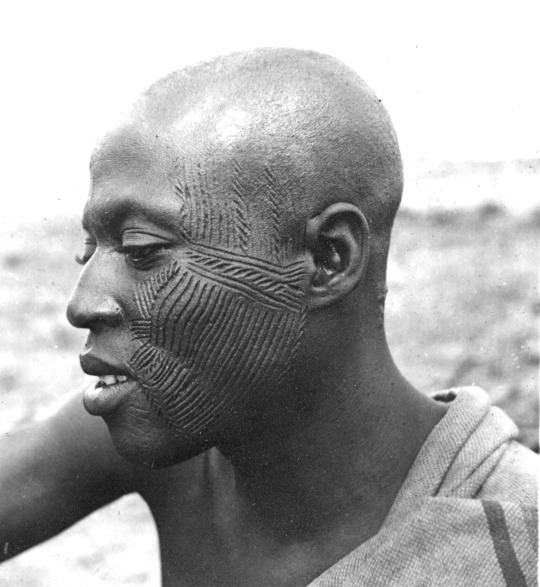
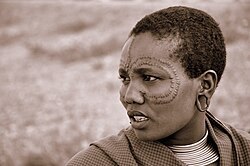
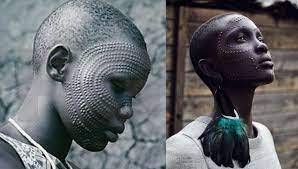
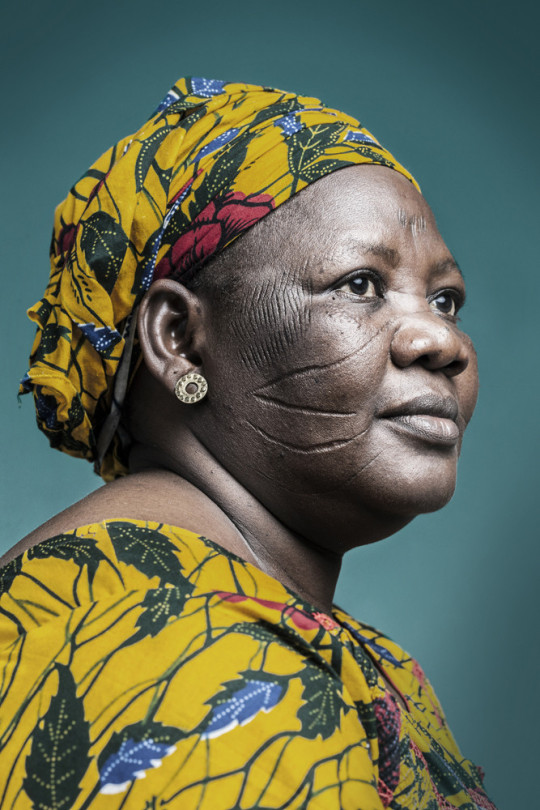
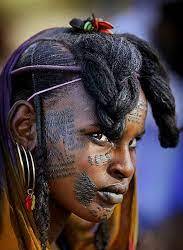

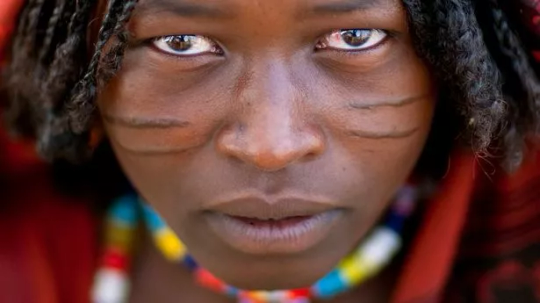
In Africa, European colonial governments and European Christian missionaries criminalized and stigmatized the cultural practices of tattooing and scarification; consequently, the practices underwent decline, ended, or continued to be performed as acts of resistance.
Among the ethnic groups in sub-Saharan Africa that traditionally practice scarification are the Gonja, Dagomba, Frafra, Mamprusi, Nanumba, Bali, Tɔfin, Bobo, Montol, Kofyar, Yoruba, and Tiv people of West Africa, and the Dinka, Nuer, Surma, Shilluk, Toposa, Moru, Bondei, Shambaa, Barabaig, and Maasai people of East Africa.
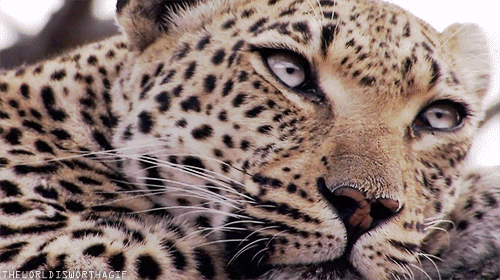
Traditionally, the most common reason for scarification has been as a rite of passage.
Scarification has been widely used by many West African tribes to mark milestone stages in both men and women's lives, such as puberty and marriage.
In many tribes, members unwilling to participate in scarification were generally not included in the group's activities, and are often shunned from their society.
According to anthropologist Grace Harris, group members lacking the normal characteristics consistent with the group are not considered as having acquired the full standing as agents in their society; they would also lack the capacity for meaningful behavior, such as greeting, commanding, and stating.
Therefore, scarification can transform partial tribe members into "normal" members entirely accepted by the group.
Scarification is a form of language not readily expressed, except through extensive and intricate greetings, and gives the ability to communicate fully, which is a key element for being considered as a normal member of the group.

One reason why scarification is used as confirmation of adulthood is how it shows the ability to endure pain. With young men, the endurance of the pain of scarring exhibits strength and discipline, especially in tribes where males have roles as hunters and warriors.
A young man who has already experienced the feeling of torn or cut flesh is considered less likely to fear the teeth of a wild animal or the tip of an enemy's spear.
In Ethiopia and Zambia, elaborate scarification is often done on women at puberty, used to denote a willingness to be a mother. The markings show that she can stand the pain of childbirth, as well as being an indication of her emotional maturity.
Some of these rites of passage have spiritual or religious roots, such young boys in the Chambri tribe of Papua New Guinea undergo scarification resembling crocodile scales to mark their transition into manhood, a ritual which stems from the belief that humans evolved from crocodiles.
In Ethiopia, Suri men scar their bodies to show that they have killed someone from an enemy tribe;
the Mursi practice scarification for largely aesthetic reasons in order to attract the opposite sex and enhance the tactile experience of sex.
The Ekoi of Nigeria believe that the scars serve, on their way to the afterlife, as money.

#ekoi#mursi#maasi#nigerian#scarification#african#afrakan#kemetic dreams#brownskin#brown skin#afrakans#africans#african culture#afrakan spirituality#suri#ethiopian#zambia#afterlife#sacrifice#free will#immortality#philosophy#chambri#rite of passage#tiv#Gonjas#Nanumbas#Dagombas#Frafras#ghana
145 notes
·
View notes
Text
Bimbilla residents faced with water challenges
Bimbilla residents faced with water challenges
Residents of Bimbilla in the Nanumba North Municipality are battling with a water shortage which has lasted for two months.
With the onset of the dry season, the residents are contending with the worsening brunt of what has become a water crisis.
Some pipes on the mainline were damaged during road construction and the pipes are yet to be repaired.
Currently, residents depend on water tank…

View On WordPress
0 notes
Text
Meet Mensah Kwame: The headteacher who swims to school
Meet Mensah Kwame: The headteacher who swims to school
Meet Mensah Kwame, The headteacher who swims to school. This is heartbreaking and sad but the story has to be told. Poor conditions in rural communities prevent most teachers from accepting postings to these communities.
But this is not the case for Mensah Kwame, a teacher at Lonpe MA Primary School in the Nanumba North District of the Northern Region.
Mensah Kwame is a 36-year-old teacher who is…

View On WordPress
0 notes
Text
DAMBA FESTIVAL
Chiefs and people from Ghana's Northern, Savanna, North East, and Upper West regions participate in the Damba celebration. Damba is a Dagbani name, Damma is a Mampruli name, and Jingbenti is a Waali name. The event takes place in the Dagomba lunar month of Damba, which corresponds to Rabia al-Awwal, the third month of the Islamic calendar. Damba is commemorated to commemorate the birth and name of the Holy Prophet Muhammad, although the celebration's actual substance is a glorification of the chieftaincy rather than specific Islamic symbolism. The Gonjas in the Savanna region also commemorate the Damba. The celebration is usually held during a certain month for the Gonjas. The Somo Damba, the Naa Damba, and the "Belkulsi" are the three sessions of the festival.
The festival is a time when most people buy new clothes and gifts since everyone wants to look their best. Females wear traditional hand woven cloth wrapped around their waists and expensive jewelry, while guys wear colorful, hand woven smocks suited for dancing.
It is also a time for eating, exchanging gifts, musket firing, and the display of warrior dance and battle feats, as well as replication of war motifs. It also acts as a training ground for the youth, with the goal of culminating in a show of bravery and magnificence.
While people celebrate chieftaincy, there is a show of riding skills. Indeed, through solemn processions, Chiefs present themselves to the people in gorgeous regalia. People flock to the festival grounds or palaces to shower praises, show respect, dance, entertain, express sympathies, love, accord respect, and show off their finery while listening to oral history and listening to praise singers sing to the paramount leaders or king and subjects.
Young people assemble at the chief's palace for dance rehearsals for the first 10 days or nights after the appearance of the new crescent (moon) of Damba month (on the Dagbon calendar). Every night, they are summoned to the palace by the sound of drums.
This is an opportunity for young people to learn from the elders how to perform their dance traditions. Women may gather during this occasion to sing praises to the chiefs for their exploits, enticement, and bravery while staying at the palace for ten nights.
The second section of the festival takes place on Damba's 11th day. The Muslim chiefs and their followers arrive to the palace early in the morning to witness the slaughter of a bull in accordance with Islamic ritual. Those in attendance create a circle around the bull and walk or jump three times over it. Verses from the Holy Quran are recited throughout this workout. The bull is slain, and the meat is divided to those who wish to feast.
The Chief is nowhere to be found in the morning. The ceremonies, however, are overseen by a state elder in charge of the Damba festival/festivities (Somo Damba) on this particular day. People congregate at the palace late in the afternoon in response to drumming. After a large throng has assembled, the Ya-Naa (Paramount Chief) is escorted out by his elders. As the musketeers fire their rifles and praise singers shout appellations, he goes slowly. The chief is seated atop a pile of animal skins draped in lovely oriented carpets.
Everyone must get permission from the chief to dance, and the chief pays the drummers and Gonje (stringed musical instrument) players. The audience donates or showers money and calculated accolades on the dancers and musicians once they are on the dance floor. The Chief, in fact, is the last to dance, and he exits in the same manner that he entered, putting the evening's activities to a close on the 11th day of Damba. The "Naa Damba" is commemorated on the 17th. It is the most important of the festival days, with dancing and, in particular, processions, such as the twilight procession.
In Naa Damba, everyone wants to make it grand, which includes feasting, homage, and excitement. It is also commemorated in the same way as the 11th, with rice harvesting in the morning and dancing in the evening. The goodbye Damba, also known as "Belkusi," falls on the 18th day. The highest-ranking sub chief will lead other low-ranking sectional chiefs and elders in thanking the sectional chiefs, building up to the climax, when the people, chiefs, and others gather at the "Yaa Naa" or village or town chief's palace.
They'll go from house to house greeting sectional heads and mobilizing people on matters like peace, development, fund raising, and resource mobilization, among other things. Politicians, non-governmental organizations, corporations, and affluent individuals are contacted for assistance.
Most chiefs and the wealthy of society ride their horses to the durbar grounds to display their culture, values, and heritage for adoration, tourism, education, and advocacy. While the farewell and thankfulness continue late into the night, they demonstrate horseback riding and dance skills. The chief of Yendi, "Balogu," is the last to be acknowledged, whereas "Zohi Naa" is the first.
As a result, the Damba at Yendi, the Ya-Naa's is exquisite. The historical and cultural legacy of the region is on exhibit for public education, tourism, and enjoyment. On the 11th and 17th days of celebrations at the Chief's palace, there is Night Damba. By 12 p.m., chiefs, elders, drummers, and the people have gathered and will dance till dawn. Women of Dagbon sing homage to the chiefs late at night, while drumming and dancing continue till dawn.
Damba festival is a thanksgiving celebration as well as a time for family to get together and interact. It can also be used to audit and evaluate the past as well as plan for the future. This is the time of year when Dagbamba who live outside of Dagbon return to Dagbon for the celebrations.
1 note
·
View note
Photo

chefe do reino de nanumba, bimbilla, gana, alfred weidinger
40 notes
·
View notes
Photo
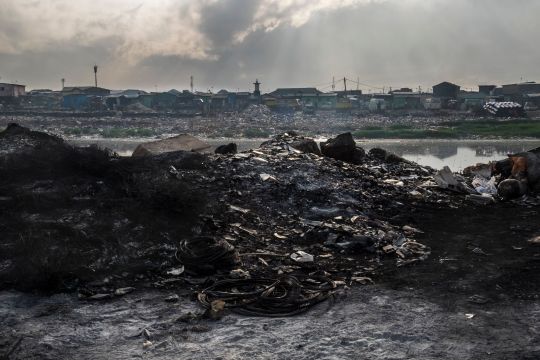
Agbogbloshie, Accra, Ghana. 9 November 2018.
View of Old Fadama from the Kilimanjaro burning area in the Agbogbloshie scrap yard. The slum sprang in the Korle Lagoon and filled up in the 80s as population started migrating from the Konkomba-Nanumba tribal conflict in the North of Ghana to Accra.
The polluted Odaw River divides the slum from the Agbogbloshie scrap yard, known also for being one of the biggest electronic waste dumps in the world.
From the series "Burning Dreams". © Carolina Rapezzi
#art#photography#ghana#accra#pollution#fadama#human right#chilrens rights#humanity#war#carolina rapezzi#burning#dreams#slum#korle lagoon#migration#tribal#odaw river#scrap#waste#dump
2 notes
·
View notes
Text

comfort & style, ‘Nanumba’ fugu cloak 🎊
available online + in @ellelokko, Osu

4 notes
·
View notes
Text
Ibn Chambas commends government for resolving Yendi Chieftaincy dispute
Ibn Chambas commends government for resolving Yendi Chieftaincy dispute
Dr Mohammed Ibn Chambas, a former President of the ECOWAS Parliament, has commended the Government for resolving the long standing Yendi chieftaincy dispute.
He welcomed the recent meeting at the Ya Na’s Palace, initiated by the Government, the Dagbon Forum, the Nanumba Youth, Konkomba Youth and the Gonjaland Youth Associations to douse the flames of conflict in the eastern part of the Northern…

View On WordPress
0 notes
Text
Soldier Allegedly Shoots Man Dead At Bimbilla
Soldier Allegedly Shoots Man Dead At Bimbilla
A resident of Bimbilla, Fusheini Osman has allegedly been shot to death by a soldier at Bimbilla in the Nanumba North District of the Northern Region.
The incident occurred on the night of Tuesday, 23 November 2021.
The deceased, who was a security man, was allegedly shot in the stomach by Military personnel while on a motorbike.
READ ALSO: 22-year-old Spices ‘Thief’ Shot Dead At Asuofia-Asamang…

View On WordPress
0 notes
Photo

Batakari Smock HAND SEWN SMOCK (BATAKARI) Batakari is the traditional cloth worn by Men and Women alike in the Northern part of Ghana. Embrace and adopt the dignity of a powerful heritage, with these comfortable and distinctive men’s African Batakari pull-over outer garments. The Ghana Batakari smocks are heavy strips of strong hand-woven fabric, which come in various colors and may be augmented with authentic traditional designs. We bring these to you directly from the Northern Region of Ghana, West Africa where Hausa, Dagomba, and Dagbani men have for centuries, maintained their proud heritage, wearing this same garment. Embrace the strength of tradition when you wear these African clothes, that reflect the great cultures of Africa. Nice and colorful Batakari Smock with a protective talisman on both sides. "Throughout many parts of West Africa, there is a tradition of wearing amulet-laden smocks in the context of both war and the hunt, in addition, to select ceremonial occasions. Among the Akan, these “war shirts” are called batakari,"Several occasions require the Fugu as the dress code, for instance, the Damba Festival celebrated by the people of Dagbon, Gonja, Mamprusi, Nanumba, and Wala of Northern Ghana. During burial and marriage ceremonies, the smock is also worn. Handwoven with the highest quality of thread, this one comes in long sleeves and the Size is Medium.
1 note
·
View note
Text
Retired headteacher’s claims about unpaid pension benefits untrue – SSNIT
Retired headteacher’s claims about unpaid pension benefits untrue – SSNIT
The Social Security and National Insurance Trust (SSNIT), has said the claims by a retired teacher in the Nanumba North Municipality of the Northern Region, that he has not been able to access his pension benefits for seven years after retiring are untrue.
In a statement issued on Thursday, July 22, 2021, and copied to Citi News, SSNIT explained that the retiree, Napari Manga, qualified and opted…

View On WordPress
0 notes
Photo

PRINCESS YENNENGA: HORSE-RIDING WARRIOR AND MOTHER OF MOSSI PEOPLE OF BURKINA FASO Princess Yennenga, also known as Yennenga the Svelte, was a legendary African princess, considered the mother of the Mossi Mole-Dagbani people of Burkina Faso. She was a famous horse-riding warrior whose son Ouedraogo founded the Mossi Kingdoms. The origin of the "Land of Honest Men," the meaning of Burkina Faso is entrenched in the history of Princess Yennenga. The stallion, the princess's own power animal became an important symbol in the country and it symbolizes her passion, personal drive, and appetite for power. Princess Yennenga (12th century) was the female warrior considered to be the mother of the Mossi Kingdom. By Brenda Gael McSweeney Yennenga was the only daughter of the progenitor of the four Mole-Dagbani ethnic groups, Na Gbewa is also known as Nedega. Na Gbewa or Nedega became the early 12th-century king of a Kingdom at Pusiga in the northern region of Ghana. Na Gbewa`s three sons all founded powerful kingdoms. The first son, Tohagu founded the Mamprusi kingdom, the second son, Sitobu founded the Dagomba kingdom, and the other son founded Nanumba kingdom, all in the northern region of Ghana. It is no surprise that Na Gbewa`s only daughters` son Ouedraogo following her mother, Yennenga`s, warrior prowess also founded the most powerful Mossi kingdom of the ethnic Mossi people in Burkina Faso. Yennenga the only daughter of Na Gbewa was said to very beautiful (as all Mole-Dagbani women are, even today) and a beloved princess who from the age of 14, fought in the battle for her father against the neighboring Malinkés. She was a very brave woman, with uncommon skills with javelins, spears, and bows, an excellent horsewoman who rode horses much better than his brothers and commanded her own battalion at a tender age. Yennenga was such an important fighter that when she reached a marriageable age, her father refused to choose a husband for her or allow her to marry. To express her unhappiness to her father, Yennenga planted a field of wheat. When the crop grew, she let it rot. She would not harvest it. Her father was very surprised and asked her for an explanation. https://www.instagram.com/p/CLVdMtElng6/?igshid=a47v55atyhyc
0 notes
Photo
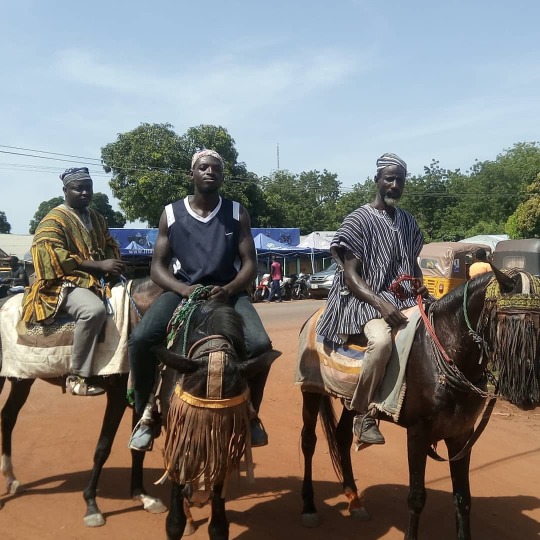
Discounted tour packages this month of traditional festivities in Northern Ghana. Damba is a traditional cultural festival commonly celebrated by the people of Northern Ghana, popular among the Gonja kingdom:- Damongo near Mole National Park & Larabanga, Dagomba kingdom:- Tamale & Yendi, Manprusi, Nanumba and the people of Upper West Region. Damba is celebrated using the traditional and lunar calendar and it does not match with the regular calendar date with specific dates within the year. @bestghanatours www.bestghanatours.com #bestghanatours #Africa #tourism #molenationalpark #photooftheday #photo #larabanga #adventure #ourjourneydoesnotendhere #photography #naturephotography #Ghana #visitghana #wetravelto #travelphotography #Travel #travelling #workout #world https://www.instagram.com/p/B4hexQapRb7/?igshid=5ly8av57jyfg
#bestghanatours#africa#tourism#molenationalpark#photooftheday#photo#larabanga#adventure#ourjourneydoesnotendhere#photography#naturephotography#ghana#visitghana#wetravelto#travelphotography#travel#travelling#workout#world
0 notes
Photo
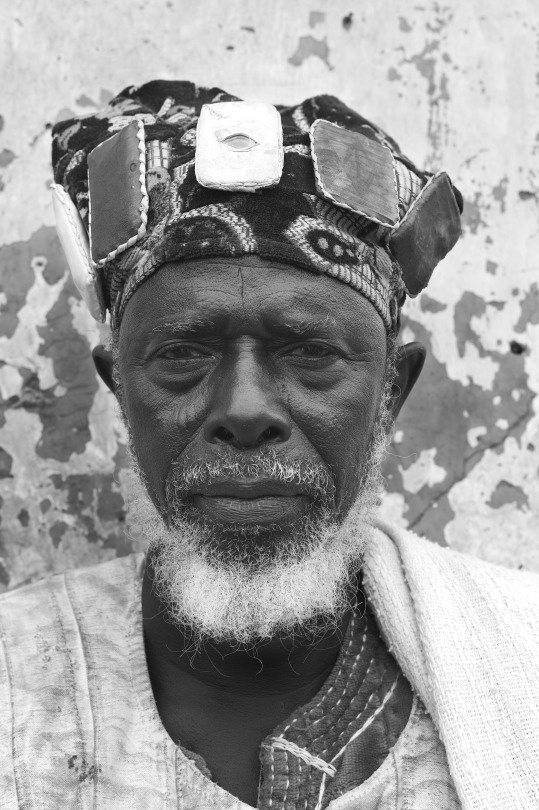
chefe do reino de nanumba, bimbilla, gana, alfred weidinger
11 notes
·
View notes
Text
N/R: Two Grabbed For Causing Bees To Scatter Ghana Card Registration
N/R: Two Grabbed For Causing Bees To Scatter Ghana Card Registration
Two people are in the custody of the Bimbilla police for allegedly causing a swarm of bees to disrupt the Ghana Card registration process at Chamba in the Nanumba North Municipality of the Northern Region Wednesday afternoon.
The District Police Commander, ASP Evans Vorvor explained that two men in the queue were upset with the National Identification Authority officials because they were not…
View On WordPress
0 notes
Text
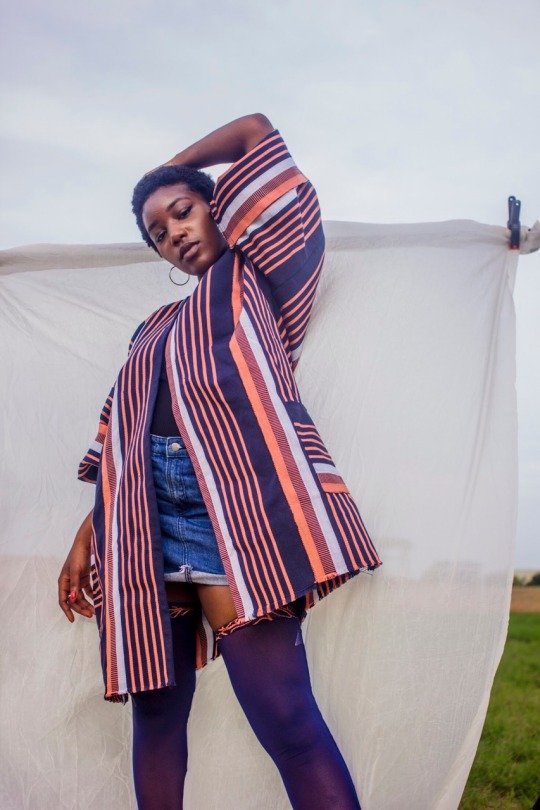
Nanumba • 🌸
Located in the northern half of the Bimbila district in the Northern Region of Ghana, the Nanumba tribe is one of the many ethnic groups spread across the northern regions of Ghana after which we’ve named this gorgeous fugu cloak. ‘Nanuni’ is the language spoken by the Nanumbas. The main occupation is yam farming.
The northern regions are some of the most beautiful & grounding places to be in Ghana & we encourage you all to try to experience it sometime if you haven’t already; the culture, the landscapes, the people, the food, the markets, the fabric, the peace! Whew ... 🌸
6 notes
·
View notes